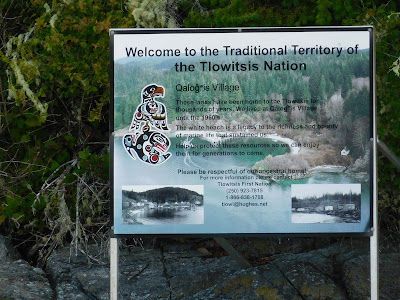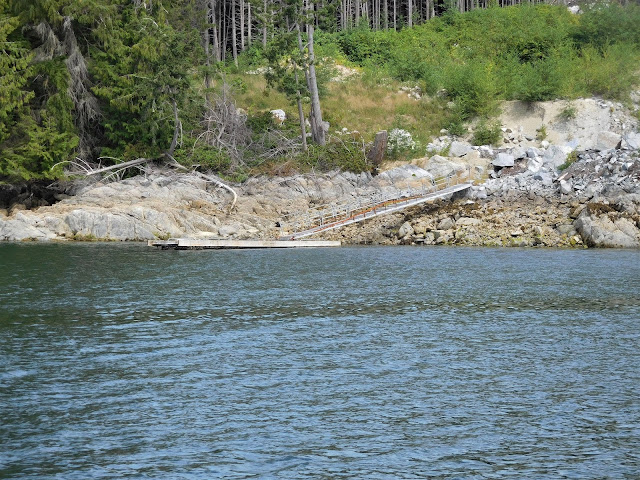 |
| Leonard and Knut discussing plans for the day |
After
transiting False Narrows, we continued northward, bypassing Nanaimo and arrived
at Comox, where we spent a couple of days visiting our friends Knut and
Christine, who winter their boat in Anacortes. They live in South Africa and
come to the Pacific Northwest to enjoy the boating season with their 47-foot
Nordhaven. We planned to meet up at Comox, as they headed south and we headed
north. As always, we enjoyed their company and shared dinners out, window
shopping, and a gelato stop for everyone’s favorite flavor.
From Comox,
our next stop was the city of Campbell River, which has several marinas, local parks
and museums. Boaters can moor at the large Discovery Harbour Marina, or the
smaller, more personable Coast Marina, or moor among the fishing boats at
Fisherman’s Wharf. Each marina has something of interest to offer, with shops
and cafes nearby.
 |
| Discovery Harbour Marina |
The
Discovery Harbour Marina is owned and run by the First Nations and can
accommodate mega yachts. The Ocean Pacific Marine Store & Boatyard is
located upland, along with the adjacent Discovery Harbour Fuels. Several good
pubs overlook the marina and you’ll find big-box retail stores within easy
walking distance.
 |
| A New Promenade leads from Discovery Harbour Marina to Coast Marina |
Boaters will be happy to learn that a new promenade now
connects the Discovery Harbour Marina and the Coast Marina, providing a much
easier walk or bicycle ride to the two different shopping areas.
 |
| Coast Marina, located in the middle of Campbell River's three breakwaters |
The
privately-owned Coast Marina is near the heart of downtown with art shops,
boutiques, and cafes; boaters can also enjoy the marina’s fun fish n’ chips
café located right on the docks.
 |
| Dockside Fish n' Chips is located right on the docks at the Coast Marina |
 |
| Street Fair near the Coast Marina |
We happened upon a fair taking place in town, an
art’s festival displaying and selling locally hand-crafted creations.
 |
| Play Center at Foreshore Park |
Foreshore
Park, with a children's play area, is located next to Coast Marina, where the promenade continues south
to Fisherman’s Wharf.
We have stayed at the Coast Marina on a number of
occasions and have gotten to know the owner/manager, Derik Pallan. Derik is a
delightful, charismatic individual who always makes you feel at home and works
to fit everyone into his marina. He is a big part of what makes Coast Marina a
fun stop.
 |
| Derik helping one of his many customers |
He seems to enjoy our company and the feeling is mutual. He
graciously invited us to have dinner with he and his wife, Tanya, at their
beautiful home. In addition to maintaining a marina and maintaining a home with
three college-bound daughters, he’s also involved in the logging and lumber
business. Definitely a fun couple with lots of stories to share.
 |
| The Maritime Heritage Centre and Children's Touch-Tank Shack |
Continuing
south along the promenade to Fisherman’s Wharf, visitors will find the Maritime
Heritage Centre, an interesting museum with local maritime history. The younger
children enjoy the touch-tank aquarium located next to the wharf.
 |
| Fisherman's Wharf and Coast Guard Station |
We discovered
that the locals like to walk the large fishing pier; the pier is much larger
than it first appears and is filled with picnic tables and shelters; there’s even an
ice cream shop on the pier.
 |
| Fishing Pier at Fisherman's Wharf |
Notches for fishing poles and special chairs for the
fishermen are located along the pier, which is a great place to stroll on a Sunday afternoon.
It’s worth
spending some time in Campbell River, there’s plenty to see and do. Don’t
forget about the Sunday Market held at Fisherman’s Wharf from 10 a.m. to 2:30
p.m., May through August.
 |
| Sunday Market at Fisherman's Wharf |





























































